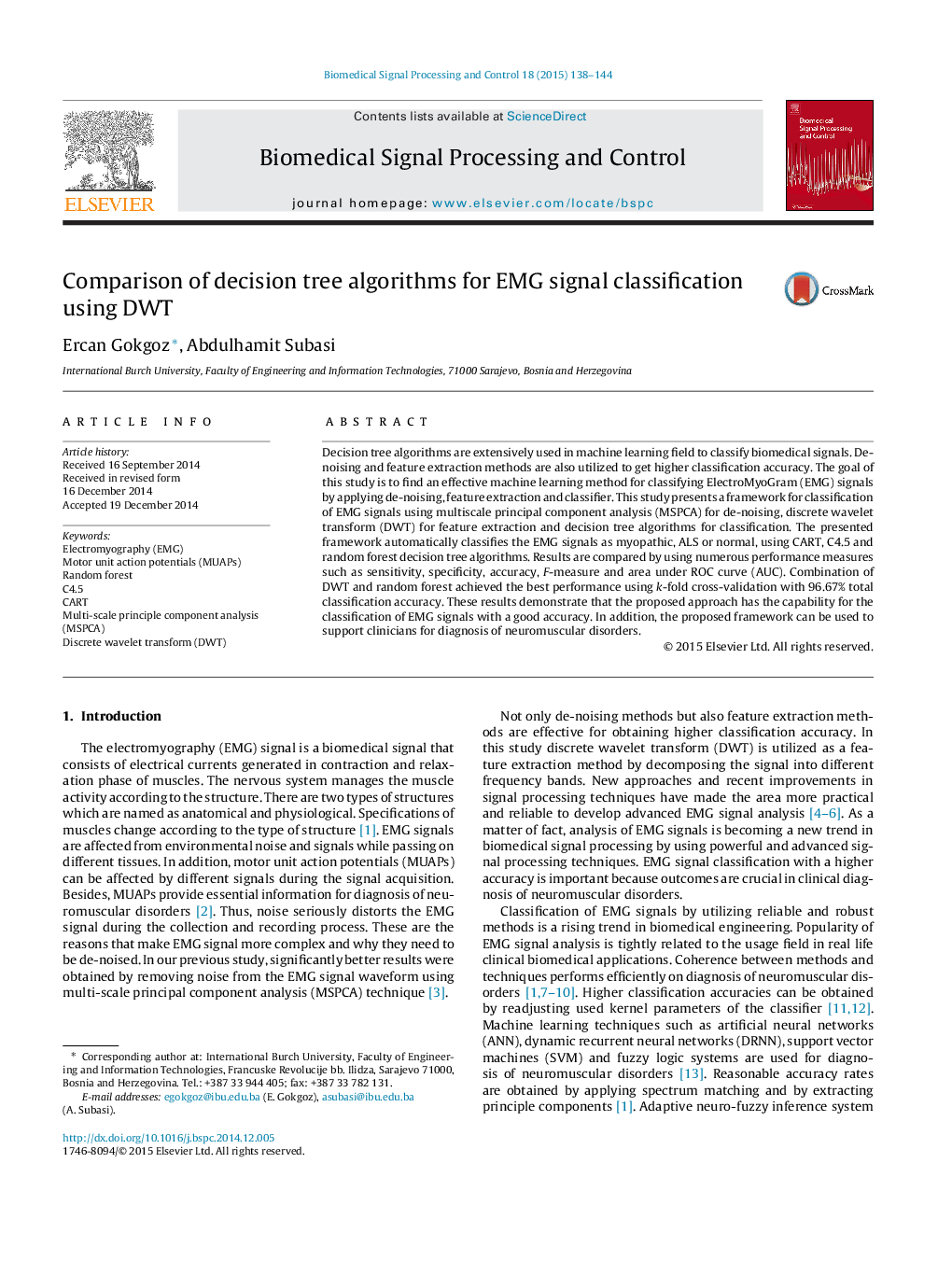| Article ID | Journal | Published Year | Pages | File Type |
|---|---|---|---|---|
| 6951378 | Biomedical Signal Processing and Control | 2015 | 7 Pages |
Abstract
Decision tree algorithms are extensively used in machine learning field to classify biomedical signals. De-noising and feature extraction methods are also utilized to get higher classification accuracy. The goal of this study is to find an effective machine learning method for classifying ElectroMyoGram (EMG) signals by applying de-noising, feature extraction and classifier. This study presents a framework for classification of EMG signals using multiscale principal component analysis (MSPCA) for de-noising, discrete wavelet transform (DWT) for feature extraction and decision tree algorithms for classification. The presented framework automatically classifies the EMG signals as myopathic, ALS or normal, using CART, C4.5 and random forest decision tree algorithms. Results are compared by using numerous performance measures such as sensitivity, specificity, accuracy, F-measure and area under ROC curve (AUC). Combination of DWT and random forest achieved the best performance using k-fold cross-validation with 96.67% total classification accuracy. These results demonstrate that the proposed approach has the capability for the classification of EMG signals with a good accuracy. In addition, the proposed framework can be used to support clinicians for diagnosis of neuromuscular disorders.
Related Topics
Physical Sciences and Engineering
Computer Science
Signal Processing
Authors
Ercan Gokgoz, Abdulhamit Subasi,
